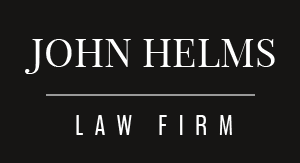“Frankly, I found the Supreme Court’s decision unremarkable. It did not decide any novel issues of law or rule on any important constitutional questions. The majority opinion struck me as very much like a run-of-the-mill opinion that the federal courts of appeal issue every day.” John Helms Dallas Federal Criminal Defense Lawyer
In United States v. Tsarnaev, No. 20-443 (U.S., March 4, 2022), the United States Supreme Court upheld the trial court’s judgment of guilt and death sentence as that one of the two Boston Marathon bombers, Dzhokhar Tsarnaev. Some media coverage of the opinion suggested that the Supreme Court expressed agreement with the jury that Tsarnaev should receive the death penalty. The actual issues in the appeal were fairly technical, so it is not surprising that some reporting may have oversimplified the decision. The case illustrates, however, an important point about how appeals actually function in criminal cases.
Criminal appeals: what they are and what they are not
At the outset, it is important to understand what criminal appeals are and are not. An appeal is not a second opinion about what the result should be. Appeals courts do not substitute their judgment in place of the jury. They do not ask what they think the result should be.
Instead, an appeals court will accept the result in the trial court, unless the appeals court finds that some legal error occurred that could have likely affected the result or violated the rights of the defendant. Put another way, an appeals court does not say, “We think he is guilty,” or “We think he deserved the death penalty.” Instead, for example, they might say, “Regardless of what we might or might not think about whether he is guilty and should have received the death penalty, we believe that the trial judge made a legal error by not permitting the defense to present evidence to the jury on a particular issue, and this error could have affected outcome, so we will order a new trial.”
With this in mind, the Supreme Court did not decide that Tsarnaev was guilty, and it did not express an opinion that the death penalty was the right punishment. Instead, the Supreme Court decided whether either of two issues raised during the appeal involved a legal error that could justify a new trial.
The first issue was whether the trial judge should have included a specific question on a questionnaire to potential jurors. The question had to do with publicity about the case. The defense had requested the question, but the trial judge had decided not to include it. The judge decided that the specific requested question would not have added anything valuable to the many other questions on the subject. The court of appeals felt that the judge should have included the question and that the failure to do so justified a new trial. Six of the nine Supreme Court justices disagreed with the court of appeals and believed that the trial court judge’s decision was easily within his discretion. The Supreme Court therefore held that this ruling did not involve an abuse of the trial court’s discretion. This seemed like an easy question to me. Even the three justices who did not join the majority did not expressly disagree.
Evidence
The second issue involved some evidence the defense wanted to present to try to convince the jury that Tsarnaev should not get the death penalty. Specifically, they wanted to show that a man had told an FBI agent that Tsarnaev‘s brother had been the instigator of an unrelated robbery and murder of three drug dealers several years earlier. The defense thought this alleged past example of Tsarnaev‘s brother allegedly being thé driving force behind a violent crime and murder would support their argument that Tsarnaev did not deserve the death penalty, because it was his brother, not him, who was the driving force behind the Boston Marathon bombing.
If this sounds to you like a strained argument for why Tsarnaev did not deserve the death penalty, the trial court judge agreed with you. In fact, he felt that the proof the defense wanted to offer may have indicated that Tsarnaev’s brother was involved with the unrelated murder, but it did not definitively show what role he played in it. The trial court, therefore, felt that the proposed evidence was not relevant enough to Tsarnaev’s punishment and that introducing it would have probably confused the jury. He, therefore, did not let the defense present this evidence to the jury.
The court of appeals disagreed and felt that the evidence should have been allowed. The court of appeals therefore held that Tsarnaev should receive a new trial. See United States v. Tsarnaev, 968 F.3d 34, 63-73 (1st Cir. 2020). Again, six of the Supreme Court justices disagreed with the court of appeals and felt that the trial court acted within its discretion in excluding the evidence from the punishment phase of the trial. The other three justices felt that, even though the evidence was arguably weak, in a case as serious as a death penalty case, the jury should have been allowed to consider it.
Conclusion by John Helms Dallas Federal Criminal Defense Lawyer
The end result was that the Supreme Court disagreed with the court of appeals on the two specific and technical legal issues discussed above and reinstated the trial court’s decision. That was all the Supreme Court decided.
Frankly, I found the Supreme Court’s decision unremarkable. It did not decide any novel issues of law or rule on any important constitutional questions. The majority opinion struck me as very much like a run-of-the-mill opinion that the federal courts of appeal issue every day. The only remarkable things about it, to me, were that the case involved a well-known and horrific act of terrorism and that the court of appeals felt that the two issues discussed above were enough to warrant a new trial.
Media Contact:
- William
(214)-666-8010
Source: https://t.co/Yk4wetorVr

